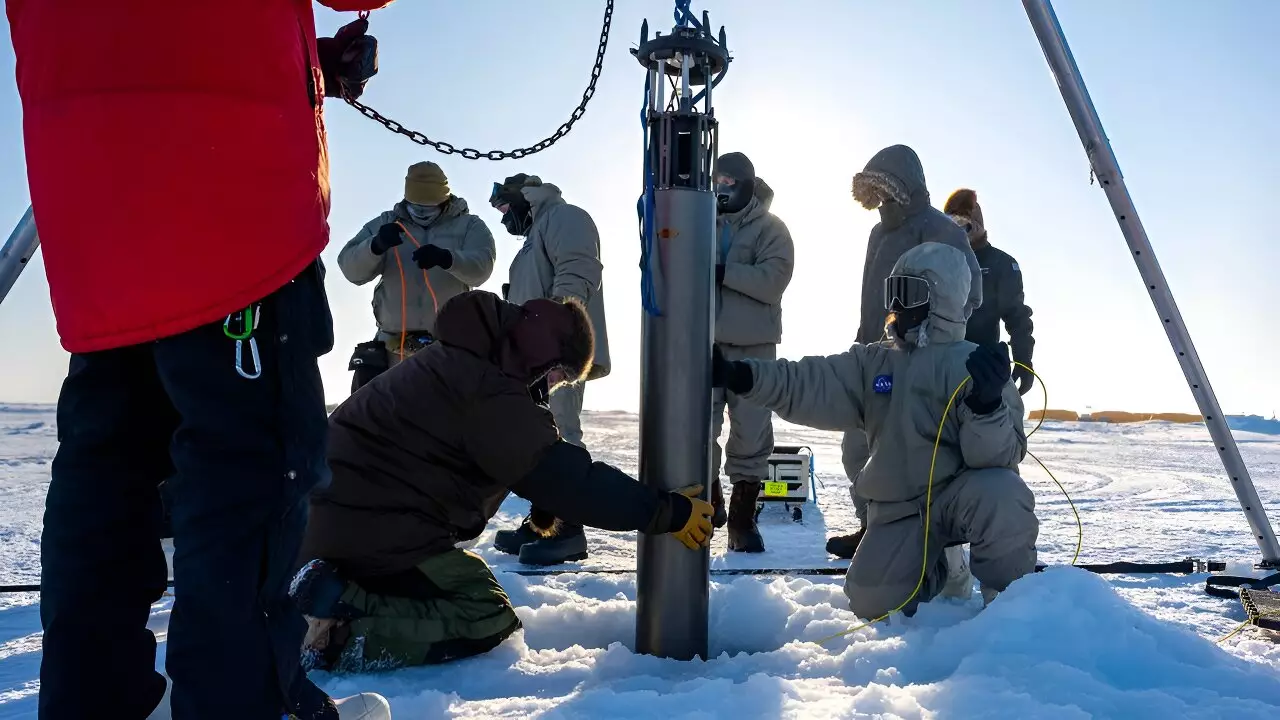The icy expanse of the Antarctic plays a pivotal role in the global climate system, primarily due to its substantial ice reserves. Scientists estimate that if the entire Antarctic ice sheet were to melt, sea levels could rise by a staggering 200 feet (approximately 60 meters), significantly altering coastlines and displacing millions of people. The urgency of understanding how quickly this ice is melting cannot be overstated, as rising sea levels pose a grave threat to coastal communities and natural ecosystems around the world. By gaining insight into the dynamics of ice melting, researchers can refine their predictive models concerning future climate scenarios.
One of the critical challenges in addressing these questions lies beneath the ice itself, particularly in the complex interplay between warming ocean currents and the massive ice shelves that serve as the last line of defense against the retreat of inland glaciers. The grounding zone, where ice shelves meet the ocean floor, and the under-ice cavities, where melt processes are most vigorous, are among the most elusive areas to study. Conventional methods, including satellite imaging, often fall short in mapping these hidden features, underscoring a dire need for innovative approaches that can safely and effectively gather data in these extreme environments.
Against this backdrop, NASA’s Jet Propulsion Laboratory (JPL) is spearheading a groundbreaking project known as IceNode. This ambitious initiative aims to deploy a fleet of autonomous robots specifically designed to explore beneath the Antarctic ice shelves. The first successful tests of these robotic prototypes have already taken place in the frigid waters of the Beaufort Sea, northwest of Alaska, where engineers closely monitored their performances from above a thick layer of sea ice.
The IceNode robots are ingeniously designed to be lightweight yet capable of withstanding the harsh conditions prevalent in polar climates. Each cylindrical drone measures approximately 8 feet (2.4 meters) in length and features an innovative three-legged landing system that allows it to anchor itself securely to the underside of the ice. Importantly, these robots lack propulsion systems; they leverage advanced software and environmental data to navigate the ocean currents beneath the ice. Once deployed, the robots journey towards their designated study areas, where their onboard sensors collect critical data on temperature, salinity, and flow patterns—all essential factors in understanding the melting processes at play.
The first polar test of the IceNode robots took place in March 2024, amidst daunting conditions, including air temperatures plummeting to -50 degrees Fahrenheit (-45 degrees Celsius). Collaborating with the U.S. Navy Arctic Submarine Laboratory at its Ice Camp, the engineering team had the opportunity to observe the prototype’s performance as it descended to depths of 330 feet (100 meters) in the icy waters. The data collected during this mission offers invaluable insights, not only validating the robot’s capabilities but also informing future modifications and enhancements.
While the initial tests lay the groundwork for future deployments, the research team at JPL is acutely aware of the multitude of technological and logistical hurdles that remain. Ensuring the robots can autonomously detach and return to the ocean surface after completing their data collection will be crucial for the success of IceNode. The research team expresses optimism and confidence in their iterative development process, refining prototypes based on real-world performance and continually improving upon their design.
With promise shown in previous trials, the next significant objective for IceNode is a full deployment beneath Antarctic ice shelves. Such ambitious undertakings are fueled by the recognition that enhanced data collection will profoundly impact our understanding of the complex mechanisms at play in ice melting. Paul Glick, the principal investigator for IceNode, emphasizes that these robots create a cost-effective and low-risk solution for accessing some of Earth’s most challenging environments.
The implications of this project extend far beyond scientific curiosity; they represent a crucial step toward comprehensively understanding climate change and its impact on global ecosystems. As the IceNode robots gather crucial data over the course of their missions, researchers hope to piece together a clearer picture of the processes driving ice melt beneath the Antarctic ice shelves. This proactive approach will ultimately aid climate scientists in honing predictive models, allowing society to better adapt to the changes in our environment that lie ahead. The IceNode initiative thus stands as a testament to human ingenuity and the relentless pursuit of knowledge in the face of urgent global challenges.

